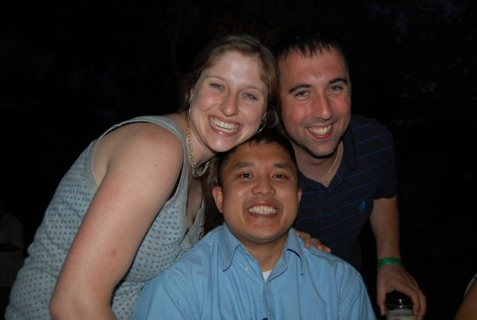U.S. residents spent a total of $1.26 trillion on health care in 2009, a study released last week found. The top 1 percent of health care consumers accounted for 22 percent of the total cost, equaling about $90,000 per person, according to the study by the Agency for Health Care Research and Quality.
That may sound like an enormous amount of money, but to Julio Manceras, a biology major, that’s nothing. Especially if you’re uninsured.
It was an early fall morning in 2009 at the University of Texas at Austin when Manceras, then 19 years old, first experienced what would become a life-long medical condition.
“First, I started to feel dizzy and light-headed with a pounding heart that felt as if it was going to come out of my chest cavity,” he said.
He was rushed to the hospital by ambulance. While his heart rate soared over 222 beats-per-minute, his face and hands numbed and his speech slurred. Manceras spent a week in the hospital, and went home undiagnosed, he said.
On his third week-long trip to the hospital for the same symptoms, he was diagnosed with Supraventricular Tachycardia, a condition that occurs when one’s heart has “irregular electrical pathways,” he said.
“They informed me that my estimated cost of treatment for that period would be over $100,000,” he said.
Because he and his parents did not have health insurance, the hospital offered to apply his financial aid at UT to his bill, he said. But because his scholarships were federally funded, it was impossible.
The hospital charged Manceras $3,000 up front, and sent a bill for $80,000 shortly after he was discharged.
By his tenth week-long stay in the hospital, Manceras had racked up over $500,000 in debt, all before his twentieth birthday. He was told that because he was a single male in college over the age of 18, he was not eligible for Medicaid.
“I have enough to worry about with school at the moment, and I’ll cross the bridge of paying off the debt fully when I have finally finished my career,” he said.
Manceras dropped out of UT in October 2009, trying to get healthy before he transferred to TCU in fall 2010. Expecting to graduate in December 2012 as a pre-med student, he says his medical past inspired him to become a doctor.
“I saw how the medical system worked and how expensive and ridiculous it was. For two Tylenol they charged me $50, which I thought was outrageous,” he said. “Through my hardships of medical problems and observing my environment, I wanted in return to give the care many people cannot afford.”
He said he is now covered by the TCU-sponsored Aetna Student Insurance plan. According to the TCU Health Center website, this plan includes health center services such as x-rays, lab work and bandages. The coverage, however, is capped at a $500,000 per illness or injury.
The Affordable Care Act was passed in March 2010, extending parent’s health care to cover their children until they turn 26. But this hasn’t helped Manceras since his parents don’t have health insurance either.
“We pay our taxes and we are legal, so why shouldn’t the government take care of its people?” he asked. “The way that I view it, where would the government be if we were all sick and couldn’t work…then, in turn, we would not be able to pay our taxes?”
Manceras is not alone. Twenty percent of traditionally-aged college students are not covered, according to a 2008 study from the United States Government Accountability Office.
But for Manceras, his tribulations are part of a bigger story.
“I learned that you must take life one step at a time and enjoy every moment of it,” he said. “Everything happens for a reason and life’s path is what forms us to be better, wiser and stronger.”

